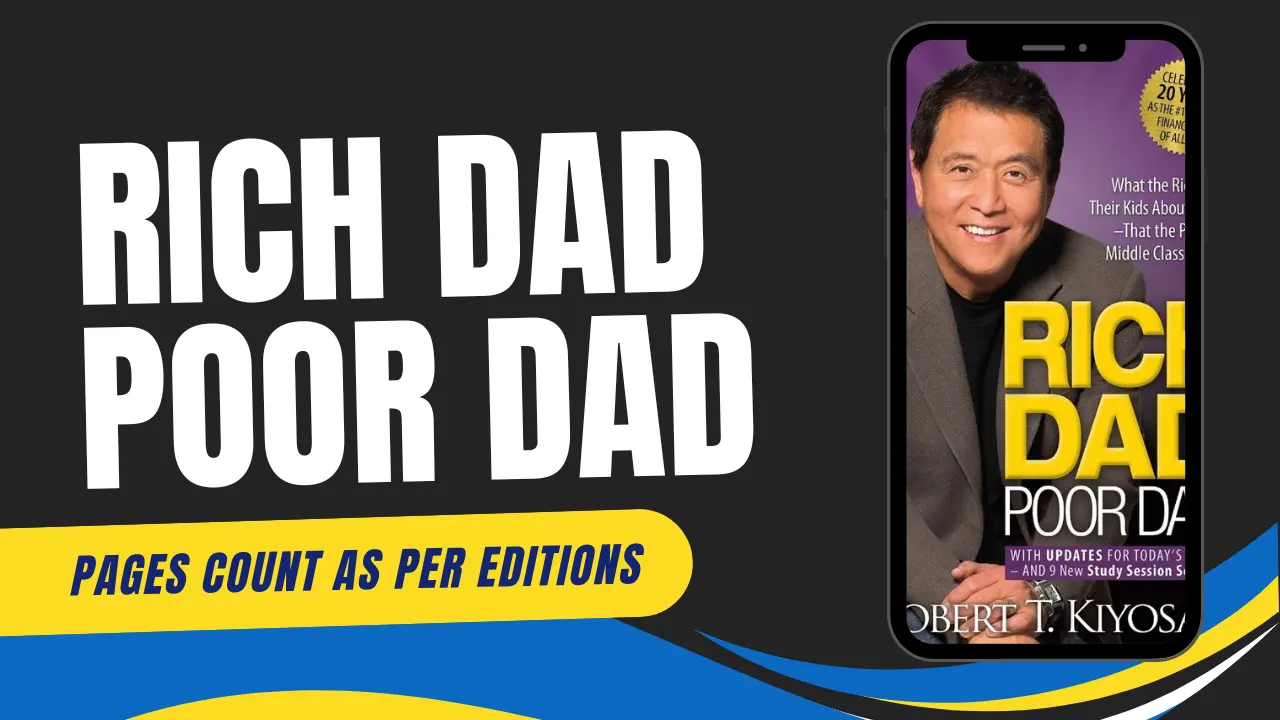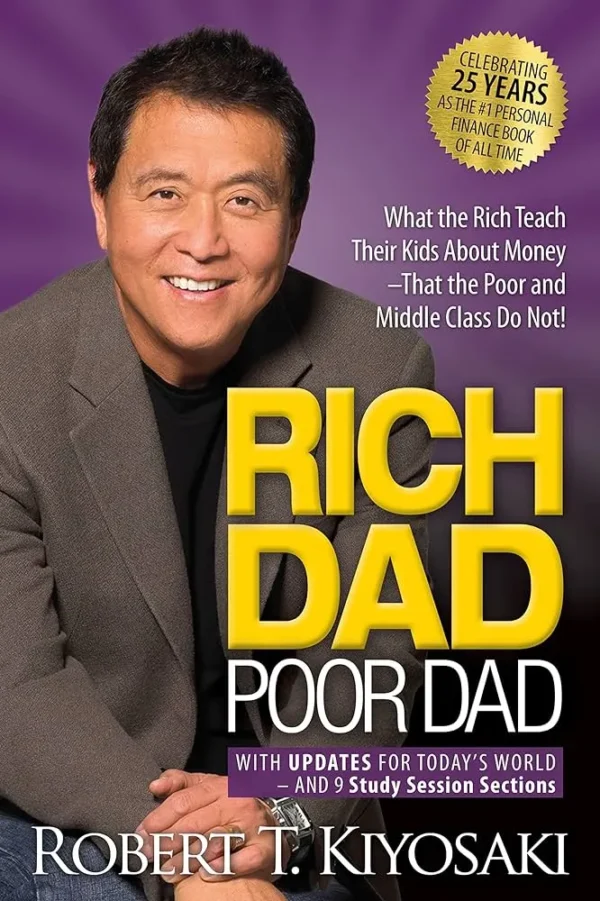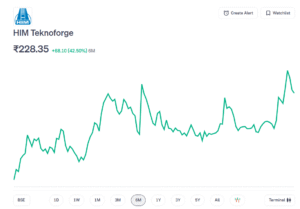“Rich Dad Poor Dad” is a groundbreaking financial literacy book authored by Robert Kiyosaki. First published in 1997, this book has since become a cornerstone in personal finance education. With its unique perspective on money and investing, “Rich Dad Poor Dad” has influenced millions of readers worldwide. This article explores the “Rich Dad Poor Dad pages count,” its various editions, and the profound impact it has had on readers and the world of personal finance.
Rich Dad Poor Dad Pages Count
The earlier edition of the book “Rich Dad Poor Dad” was published in 1997 and has a total of 195 pages. This brief production effectively encapsulated Kiyosaki’s messages about money and was easier to understand than some of the longer works.
Its language is plain and some of the concepts are easy to understand, which makes the book to have quickly circulated in the market.
As it is mentioned earlier for the book’s twentieth anniversary in 2017, there is a new publication of the book inclusive of 336 pages.
Comparing both the abridged and the expanded version, the latter entails newer content and newly experienced insights in addition to appended thoughts on the book’s relevance. The expanded page count benefited Kiyosaki because the author was able to expound on some of the principles that he taught the readers and offer them, readers, with more tips on how to manage their money.
Since its first publication “Rich Dad Poor Dad Pages Count” has been translated into more than fifty one languages and launched in one hundred and nine countries. The fundamental recommendations made as to the proper usage of money have appealed to various audiences all over the world.
Total Pages in Rich Dad Poor Dad
The first edition of the “Rich Dad Poor Dad” written by Kiyosaki was 195 pages long and was published in 1997. This short-and-sweeter rendered the core of Kiyosaki’s financial lesson in an easily digestible and entertaining bite. Which sort of contributes to the book’s over-the-top success, as it was easy to read and understand upon its release.
In honor of the book’s twentieth anniversary in 2017, there is a new, slightly expanded edition containing 336 pages. This second edition featured further material, new perspectives, and the authors’ perspectives on the book’s relevance years later.
Thanks to the addition of the new pages, Kiyosaki could provide his readers with more details concerning his viewpoints on finances and give fewer tips to follow.
“Rich Dad Poor Dad” since its creation has been translated into more than 51 languages and published in more than 109 countries. It indicates that economic facts and ideas outlined in the book have resulted in the success of people of different ages, genders, and nationalities.
Also read: Rich Dad Poor Dad in Hindi PDF
Editions and Spin-offs
Subsequently, the creation of other books and products stemming from the original “Rich Dad Poor Dad pages count” book means that more individuals can access Kiyosaki’s financial ideas. These spin-offs have been useful in popularizing the “Rich Dad” brand and also enlightening the readers about different areas of managing their finances.
They include the ‘Rich Dad’s CASHFLOW Quadrant’, which is a 288-page spin-off. This book also presents the critical concept known as CASHFLOW Quadrant: a model for distinguishing the major methods of receiving income. Kiyosaki further categorizes people into four groups, the Employee, Self-employed, Business owner, and Investor so that he can lead the readers to understand where they are, and where they should be financially.
“Rich Dad’s Guide to Investing”, which is another substantial spin-off, has 390 pages. This book looks at the subject of investing and provides useful information on how one can grow their wealth through investment. It can be advisable to note that Kiyosaki has raised the issue of financial literacy and provided the population with tips on how it is possible to think and make rational decisions effectively.
“Why We Want You to Be Rich: It is a 288-page book co-authored by Donald Trump and myself following the title, “Two Men, One Message. ” It is for the same reason that Kiyosaki decided to work with Trump who has a similar view on the questions of finance and entrepreneurism. There is personal growth that can be obtained from the experiences of the authors of the book and lessons on how to accumulate riches.
“Unfair Advantage: Certainly, the title of the book “The Power of Financial Education,” with 272 pages of content, aims to describe the relationship between financial education and financial well-being. Thus, Kiyosaki states that education in the area of money offers one a chance to beat opponents in the market, unreasonably. He challenges the readers to keep on learning and enhancing their financial literacy quoter.
Also read: Rich Dad Poor Dad PDF- A Detail Guide to Financial Freedom
Sales and Impact
The book has gone as far as selling over 32 million copies since the time it was published. The book targeted in this paper quickly rose to fame and became one of the best-selling and most recommended books in the personal finance category from the year 1997. Its clear and simple-to-understand guidance and excellent story have made it to be one of the most admired books by many people.
Recently the book “Rich Dad Poor Dad” became very popular again and this was largely due to its sharing on the TikTok social platform. The presence of Social media introduced the new generation to the new rich by Kiyosaki referring many people to the book. Indeed, this viral trend proves that Kiyosaki’s concepts are evergreen and enjoyed by the youth.
Another great achievement of ‘‘Rich Dad Poor Dad’’ is that the book has commonly featured in the New York Times best sellers list for over six years. Its constant and continuous appearance in this illustrious list, is a testimony to both, the effects it has and its reception by the public. A set of principles that can stay relevant in an ever-evolving environment of finance indicates the book’s strong points.
Some of the major international media that has covered Kiyosaki’s work include; There were among others endorsements from Hollywood celebrities for instance from Will Smith which has boosted book sales. Smith has praised ‘‘Rich Dad Poor Dad’ and contributed the book’s great lessons in Finance introducing the book to a larger market.
Criticism
However, not everybody has endorsed it, and there is criticism that has been leveled against “Rich Dad Poor Dad”. Some of the critics of the book include John T. Reed, who has been very keen in alleging that the book is full of factual sometimes fifty percent of it is full of what he terms as factual errors and unlikely accounts.
Among them, one has especially made some attacks on Reed, a real estate investor, and author who has posed serious issues on the credibility of Kiyosaki’s stories and the viability of the financial recommendations he has provided to the public.
Another hardcore Slate reviewer, Rob Walker, has also expressed his disappointment, claiming that the book is full of nonsense and the main stereotype of the self-help genre. That is why, according to Walker, despite the realistic recommendations, the book is filled with stories rather than scientific financial information.
Bottom Line
The published form of access and the number of pages of the book have changed over the years, but the insight of the reader, Kiyosaki continues to interest people. Nevertheless, the main idea of the book is fairly thought-provoking and can change people’s perceptions for the better. Ever since it was first published in 1997, “Rich Dad Poor Dad pages count” has come to define a whole generation of personal finance learners.
The author has provided personal experiences and narratives which make it easy for the reader to identify with hence making the writing style simple and easy to follow. How socio-centric is this book? Kiyosaki’s focus on financial education, business, and investments has appealed to readers who want to upgrade their financial status and become financially independent.
To date, interest in the book and its ability to affect the lives of people for the better indicate that the book “Rich Dad Poor Dad” is a work that will remain popular for many years. It incorporates many elements of finance and power, but more importantly, it has opened the eyes of hundreds of thousands of people and inspired them to regain control over their money and initiate a global discussion on the matter of financial education.
In the light of economic problems and instabilities that the global society is facing, the concepts of “Rich Dad, Poor Dad” are still effective. On this note, due to his ability to influence readers to look at money in an unfamiliar way and to invest in personal financial education, Robert Kiyosaki can be credited with making positive changes to personal finance as a subject.
Thus, the number of Rich Dad Poor Dad pages count and the different versions of the book are a clear testament to its success. A 195-page basic version of the book exists and that has also played a role in the growth of the popularity of the book, Presently, the seventh edition of the book with 336 pages and a celebrated twentieth-anniversary edition version has been published. Thus, “Rich Dad Poor Dad” keeps influencing millions of people through its spin-offs, sales, and legacy in the informal education of personal finance.
Rich Dad Poor Dad Book – Robert Kiyosaki Quotes
Unveil financial wisdom with “Rich Dad Poor Dad” by Robert Kiyosaki. Explore insightful quotes and lessons on wealth-building, financial freedom, and smart investing.




